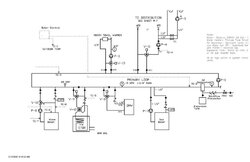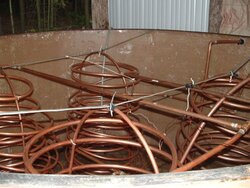Bob Rohr
Minister of Fire
Jersey Bill said:standard domestic water heaters use stratification in a similar way. As the hot water is drawn from the tank, the cold water fills in from the bottom up. this gives hot water at the outlet for much longer. If the water in the tank was mixed, the outlet water temperature would start to drop right away as the cold water averages with the hot water.
In a similar way a large storage tank with a vertical heat exchanger coil will be able to deliver, say, 130 degree water even though the bottom half (?) of the tank is well below 130. basically it allows a better drawdown and increased delta t of the storage.
Another benefit is that if there is a layer of cold water on the bottom of the tank, there will be less heat loss from the bottom because the temperature difference is less.
They tell me a typical 50 gallon water heater set at 130F with 55F incoming water will only proveid about 38-40 gallons of hot or warm water due to the mixing. I wonder hw hot the top of the tank is if the aquastat trips off at 130?
These days I see most homes with DHW recirc pumps. I'd guess the tank would be blended well at 130F?
Now if the tank was blended at 180F it seems there are more btu then in a tank with a stratification of cool water at the bottom.
I need to ring up some folks in the water heater industry to get cler on the math to determine which would store more energy. if the boiler or water heater is setpoint-ed at 130 or 180 for the boiler buffer isn't that the highest possible temperature with the rest of the tank progressivly lower as you go down?
hr



